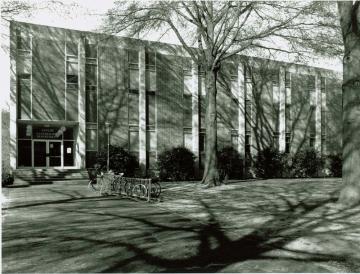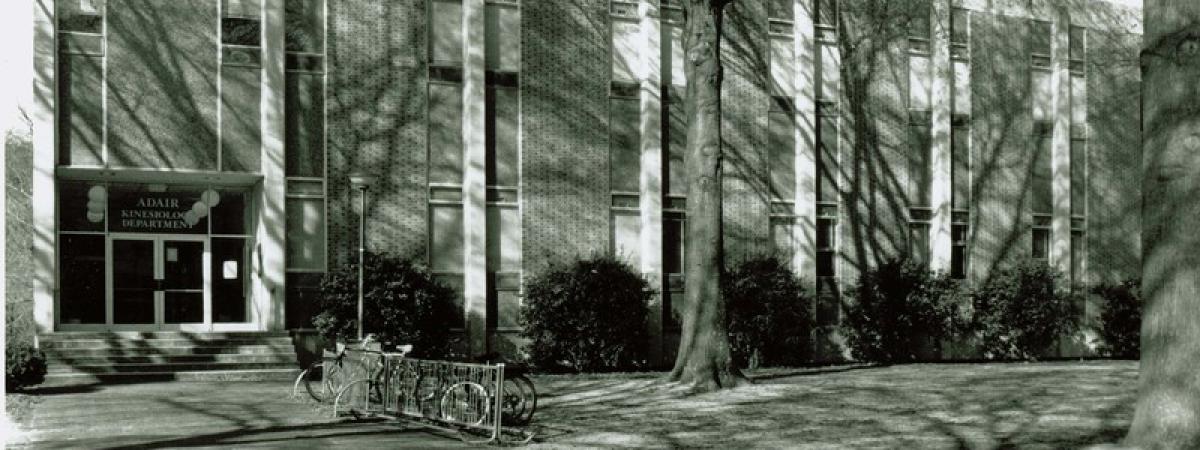
Dedication: 1963
Renovations:
Named for: Cornelia Storrs Adair
Map it for me
Adair Hall at 251 Ukrop Way is located near the intersection of Ukrop Way (formerly Campus Drive) and Landrum Drive.
Adair Hall houses an Olympic sized pool, lounge, gymnasium, dance studio, classrooms, and offices for both the Kinesiology Department and the Dance Program at William & Mary. Originally built as a women's physical education building, construction began in 1961, with the dedication ceremony on November 15, 1963. During construction, a ditch on the women's athletic field for the sewerage line to Adair and Yates caved in, killing construction worker Charles S. Taylor and seriously injuring another.
The building was named for Cornelia Storrs Adair (1885-1962), a William & Mary student who was the first woman recipient of the Alumni Medallion in 1934.
References
- The following citations are for the student newspaper the Flat Hat: 9/21/1962, p. 13; 9/28/1962, p. 11 (pictures); 2/22/1963, p. 12; 5/17/1963, p. 15 (picture); 10/11/1963, 4A (picture); 11/8/1963, p. 2; 11/15/1963, p. 1 (picture).
- Dance Program at William & Mary

